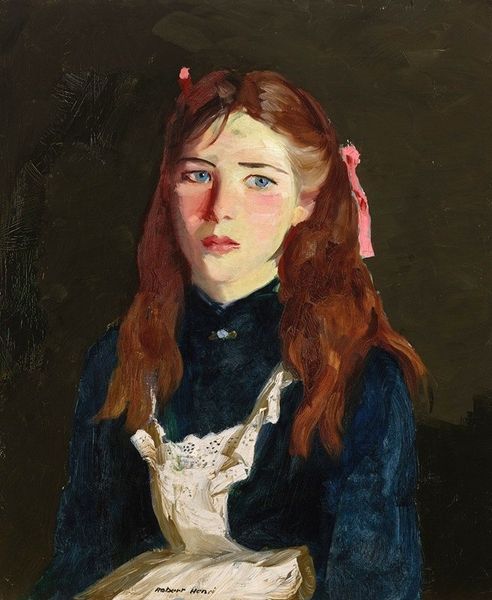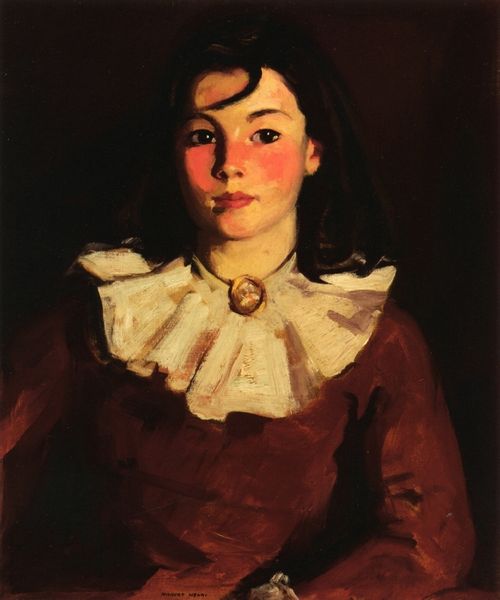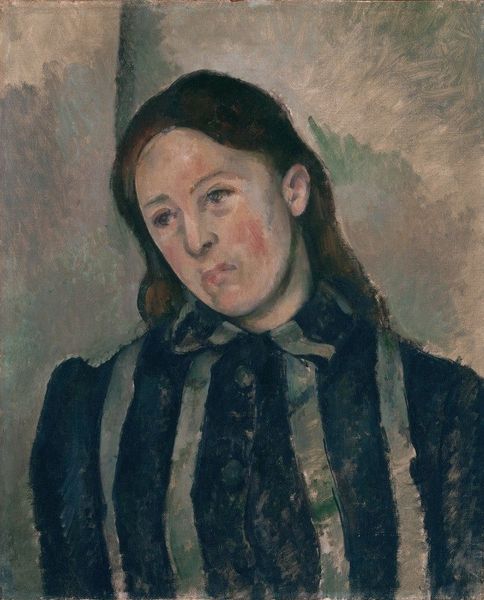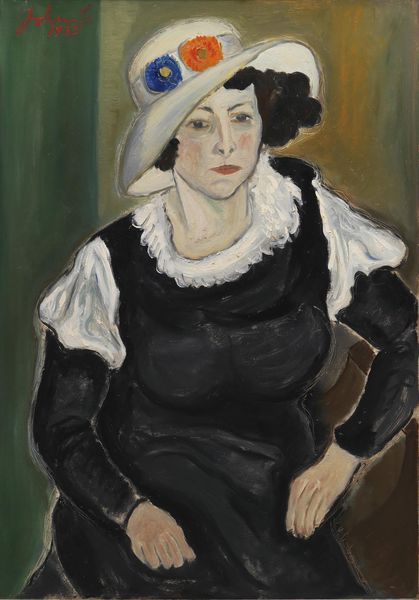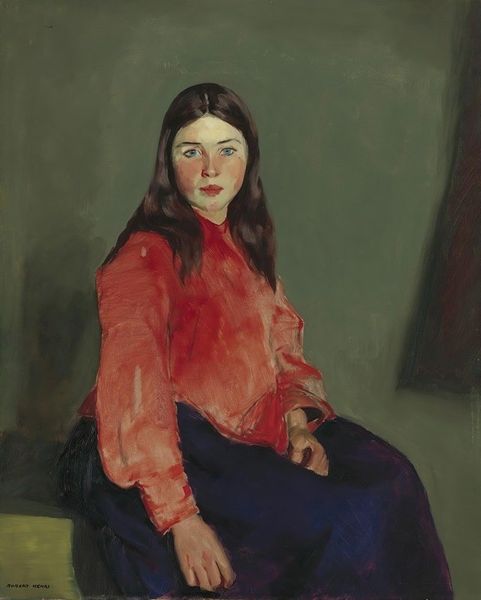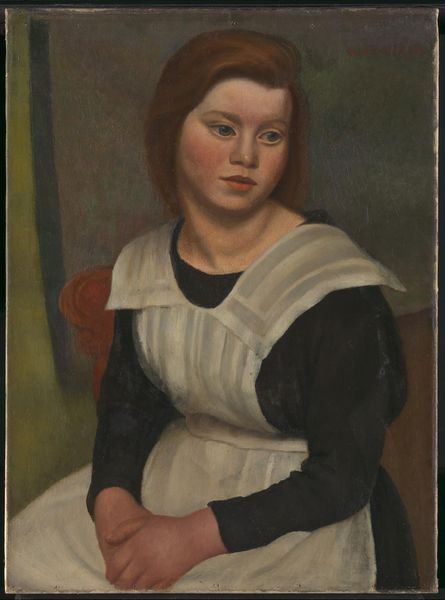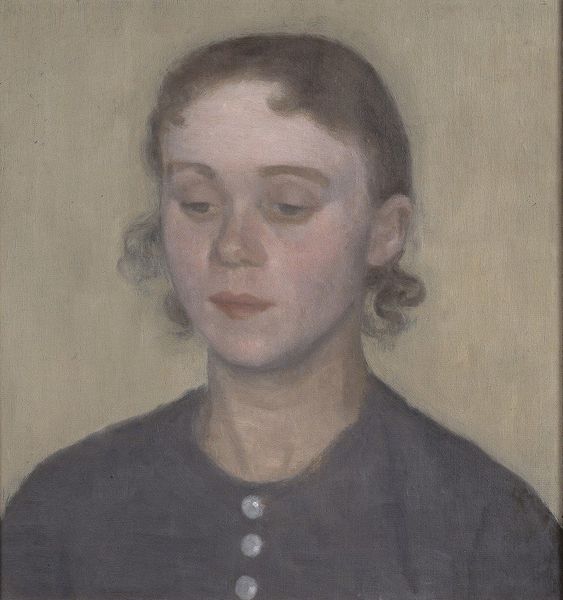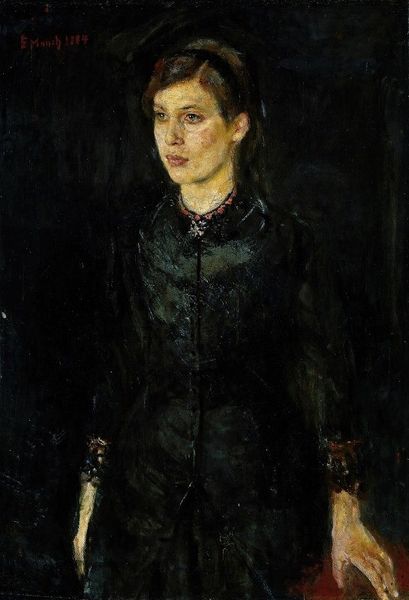
painting, oil-paint
#
portrait
#
folk-art
#
painting
#
oil-paint
#
folk-art
#
romanticism
#
united-states
#
genre-painting
#
realism
Dimensions: 30.5 × 24.9 cm (12 × 9 13/16 in.)
Copyright: Public Domain
Editor: Here we have William Bonnell’s oil painting, "Mrs. William Bonham (Ann Warford)", from June of 1825. It's striking how simply she's rendered, yet the overall impression is quite powerful. What kind of a society produces a portrait like this? Curator: That's a great question. Let's consider this work within its historical context. This piece leans towards folk art, a style flourishing outside academic art circles, often portraying middle-class subjects. What does that say about early 19th century American aspirations and the growing merchant class' desire for representation? Editor: So it’s about showing a specific class in society? The “everyday person?" Curator: Partly. But think about who commissions portraits. The Bonham's clearly had some social standing or aspirations towards it. It suggests a democratization of portraiture, moving it away from solely the wealthy elite. How does this challenge the traditional role of portraiture as a tool for conveying power and status? Editor: I see. So, it’s a shift, even if the sitter isn't "poor." Curator: Exactly! What's interesting to consider is how museums choose to display works like this now. Is it hung near similar portraits from wealthy elites, which could emphasize the sitter's comparatively modest style and appearance, or is it framed as uniquely "folk art" emphasizing this genre’s American roots? The decisions museums make reveal their agendas, which should be analyzed. Editor: That makes perfect sense. Display matters so much. This helps me think about not just what is in the frame, but how we see the painting *in* a frame, metaphorically. Curator: Precisely. Context changes everything about the portrait and impacts what future generations see. Thanks for bringing this up!
Comments
No comments
Be the first to comment and join the conversation on the ultimate creative platform.

